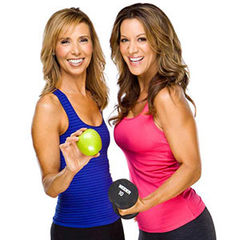For clients who are athletes or simply active all year, it’s important to eat for success, which may look different depending on the season. Many believe that eating according to the seasons is essential for good health and balance, which also translates to better performance. In colder weather, warming foods become the focus; in warmer seasons, however, cooling foods prevail.
Eating to optimize workouts and to maximize results is essential for physical fitness. This requires eating whole, seasonal foods. Here are four tips for choosing the freshest in-season foods:
- In spring, opt for leafy vegetables such as spinach, basil and romaine lettuce, as well as asparagus and artichokes. A spinach salad with seasonal vegetables like asparagus, snap peas and radishes is a great choice. Add some protein and a bright, citrus vinaigrette and you’ve got a delicious macrobalanced meal.
- In summer, opt for seasonal fruits such as strawberries, peaches, nectarines and pluots (a plum-apricot hybrid). Seasonal vegetables include cucumbers, peppers, corn (make sure your corn is organic and non-GMO), summer squash and broccoli. Omega-3-rich wild Alaskan salmon is in season from mid-May to early October, so make sure to choose this nutritious and delicious anti-inflammatory fish at least twice a week. Try grilled salmon with a strawberry-watermelon-mint salsa and grilled organic corn.
- In fall, opt for delicious, seasonal foods such as sweet potatoes, carrots, pumpkin, apples, pears and cranberries. You can even make a healthy pumpkin pie using pumpkin, coconut milk, cinnamon, coconut sugar and pumpkin pie spices.
- In winter, opt for warming seasonal foods such as fish, chicken, carrots, potatoes and eggs. Make a seasonal curry using a winter squash and potato base, and mix it with carrots, chicken, onion and kale.
Once you’ve identified the seasonal foods, you can help your clients ensure that they are eating for maximum results. Caloric needs vary depending on each individual’s level of physical activity, gender and age. Younger, highly active clients, for example, may need to eat combine three meals with multiple snacks each day, such as:
Breakfast: Veggie Omelet
- 3-egg omelet with onions, mushrooms and baby spinach topped with ½ avocado, sliced and 2/3 cup cooked quinoa
Snack: AB&B Toast
- 2 slices sprouted-grain toast + 2 Tbsp. almond butter + 1 banana sliced
Lunch: Salmon Tacos With Mango Salsa
- 3 corn tortillas + 4 oz. cooked salmon + 1/3 cup mango salsa + ½ cup shredded cabbage + 2 Tbsp. guacamole
Snack: Chia Pudding
- 1/3 cup chia seeds + 1 cup unsweetened almond milk + 2Tbsp. nut butter + ¼ cup berries + 2 dashes cinnamon + 1tsp. pure vanilla extract
Dinner: Balsamic Glazed Chicken and Veggies With Smashed Sweet Potatoes
- 5 oz. grilled chicken breast with ½ Tbsp. balsamic glaze + ½ cup sweet potatoes + 2 cups cooked vegetables
Snack: Blueberry Cheesecake
- 8 oz. cottage cheese + ½ cup organic blueberries + 2 Tbsp. crushed graham crackers
Loading your plate with seasonal foods will help to maximize optimal performance in and out of the gym. This ensures fresh, whole foods will make up the majority of the plate, which is ideal for anyone who wants to look and feel their best. Do some research into local farmers’ markets and grocery stores that prioritize seasonal foods for an easy way to eat seasonally and fresh.




 by
by 






